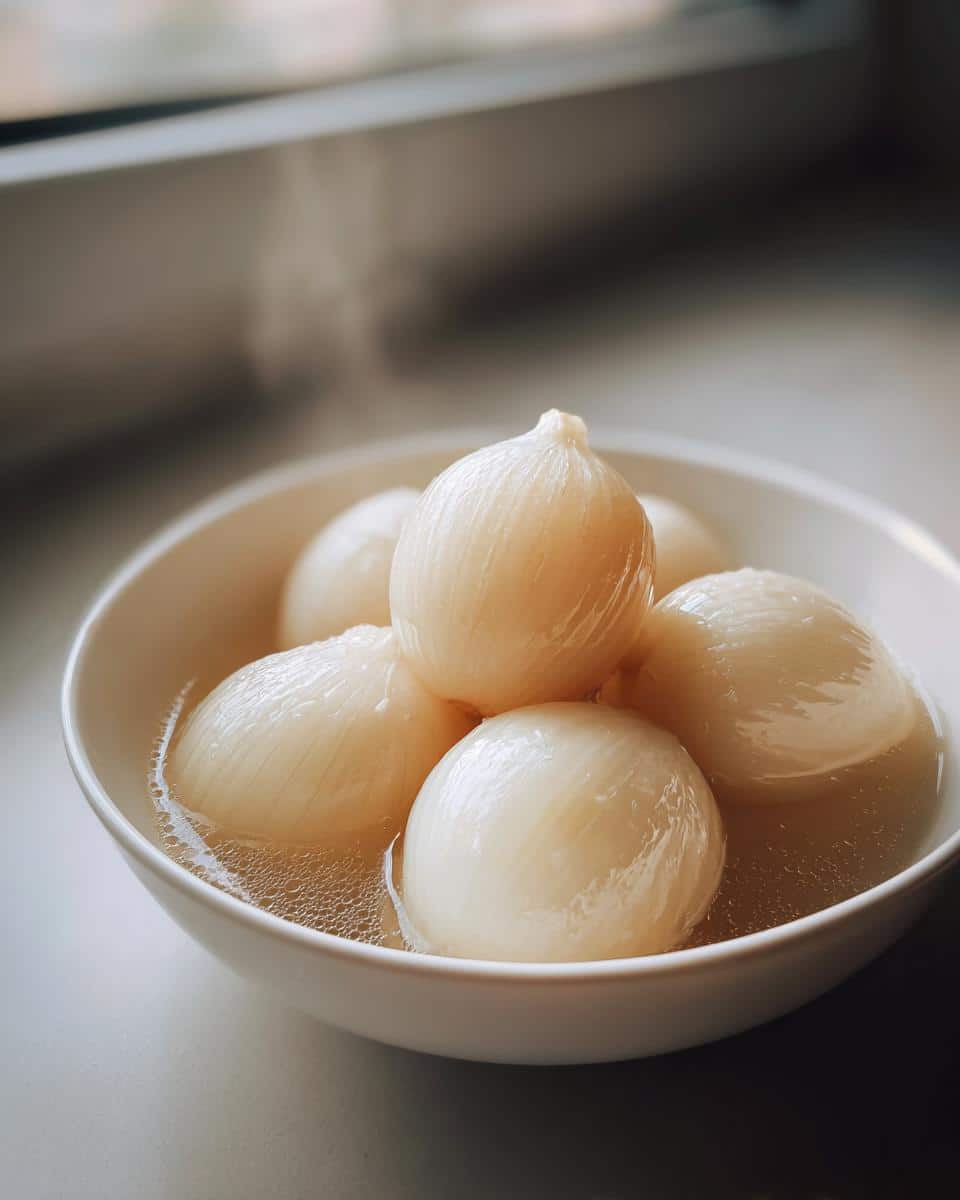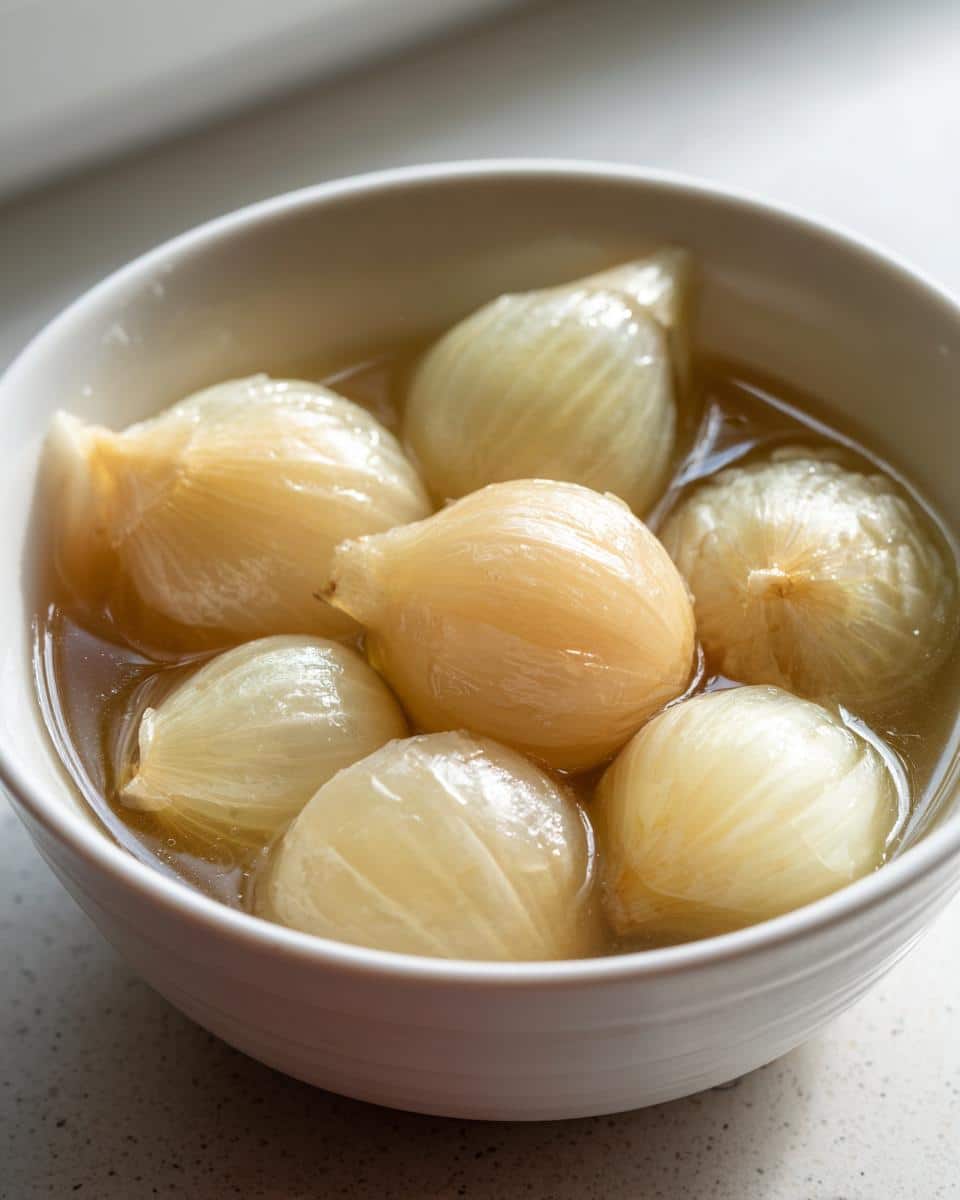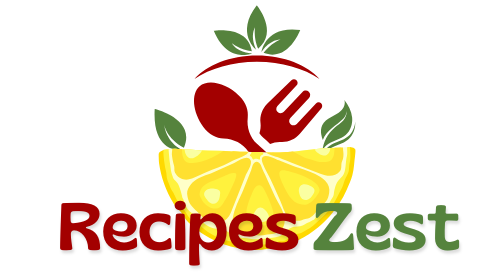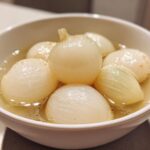You know that moment when you’re chopping onions and your eyes start watering? That’s nature’s way of telling you these humble bulbs pack serious health power! Learning how to boil onions for health unlocks all their goodness while keeping tears at bay. I’ve been boiling onions for years – ever since my grandma showed me how the simple process preserves nutrients better than frying. The magic happens when those sweet layers soften in hot water, releasing their natural compounds that support immunity and digestion. What looks like basic cooking transforms into one of the easiest, most nourishing side dishes you can make. Trust me, once you taste how boiling brings out onions’ natural sweetness, you’ll never look at them the same way again.
Table of Content
Table of Contents

Why You Should Learn How to Boil Onions for Health
Boiling onions might sound boring, but trust me—it’s one of the smartest things you can do for your health! Here’s why I swear by this simple method:
- Maximum nutrients: Gentle boiling preserves more vitamins than frying or roasting (especially that precious vitamin C!)
- Easy digestion: The heat breaks down tough fibers, making all those gut-friendly compounds easier to absorb
- Natural detox: Onions release sulfur compounds when boiled that help your liver do its cleaning job. Learn more about liver health.
- Hydration boost: The cooking water becomes a mineral-rich broth you can sip later
My grandmother used to say boiled onions were nature’s medicine—and modern science backs her up! When I feel a cold coming on, this is my go-to remedy. The best part? Even kids who hate raw onions often love the mild, sweet flavor boiling creates.
Ingredients for Boiling Onions
Gather these simple ingredients – I promise you probably have everything already! The beauty of this recipe is in its simplicity:
- 2 medium onions, peeled (yellow or white work best here)
- 4 cups water (enough to fully submerge your onions)
- 1/2 teaspoon salt (optional, but brings out the natural sweetness)
Ingredient Notes & Substitutions
Here’s where you can get creative while keeping things healthy:
- Swap water for vegetable broth if you want extra flavor – just watch the salt content
- Toss in a bay leaf, sprig of thyme, or peppercorns while boiling for aromatic depth
- Red onions work too, but they’ll tint your cooking water pink (which I think looks pretty!)
- If you’re watching sodium, skip the salt and add a squeeze of lemon juice at the end instead
That’s it! No fancy ingredients needed – just good, honest food the way Grandma would make it. The onions are really the star here.
How to Boil Onions for Health Step by Step
Okay, let me walk you through my foolproof method – it’s easier than you think! I’ve burned my fair share of onions over the years (whoops!), so trust me when I say these steps will give you perfect results every time:
- Prep your onions: Peel them first (the papery skins slide right off if you cut a shallow X on the root end first). Then chop into halves or quarters – bigger pieces hold their shape better during boiling.
- Boil the water: Use a medium pot and bring that 4 cups of water to a rolling boil. You’ll know it’s ready when big bubbles break the surface.
- Add the onions: Gently drop them in along with the salt if using. Careful – it’ll splash a bit!
- Simmer away: Reduce heat to medium-low so the water just bubbles gently. Set your timer for 10 minutes – that’s usually perfect for tender-but-not-mushy onions.
- Test doneness: Pierce with a fork at 10 minutes. Want them softer? Give them another 5 minutes – but check every minute after that.
- Drain & serve: Pour through a colander and enjoy warm. That leftover broth? Gold! Save it for sipping or adding to soups.

Tips for Perfectly Boiled Onions
Here are my secret tricks I’ve picked up after many onion-boiling adventures:
- Uniform pieces: Cut onions same size so they cook evenly (no tiny mushy bits next to crunchy chunks!)
- Don’t overcrowd: Give them room to move in the pot – boil in batches if needed
- Skim the foam: Occasionally remove the white foam that forms – it’s harmless but can make broth cloudy
- Watch the clock: Overboiling makes onions lose their sweetness and turn bitter
- Shock stop: For bright white onions, plunge them in ice water after draining
The best part? Even if you mess up slightly, boiled onions are still delicious. That’s why I love this method – it’s forgiving and foolproof!
Serving Suggestions for Boiled Onions
Now for the fun part—what to do with these tender, sweet onions! Here are my favorite ways to serve them (I’ve taste-tested them all, of course):
- Simple side dish: Drizzle with olive oil and sprinkle fresh herbs – they pair perfectly with roasted chicken or fish
- Soup booster: Toss them whole into broth-based soups during the last 5 minutes of cooking
- Mash magic: Blend boiled onions into mashed potatoes for extra creaminess and flavor
- Salad surprise: Chill boiled onions and add them to green salads for unexpected sweetness
- Toast topper: Pile them on crusty bread with goat cheese – my quick lunch obsession!
Pro tip from my kitchen: Save that nutrient-rich cooking water! I use it as the base for my next soup or just sip it warm with a pinch of salt when I need a health boost.
Storing and Reheating Boiled Onions
Here’s the good news – boiled onions keep beautifully if you store them right! I always make extra because they’re so versatile. My fridge usually has a little container of these ready to go. Just follow these simple tips to keep them fresh and tasty:
Storage basics:
- Let boiled onions cool completely before storing (but don’t leave them out more than 2 hours)
- Use an airtight container – I love glass jars because they don’t absorb smells
- Pour a splash of the cooking liquid over them to prevent drying out
- They’ll keep in the fridge for 3 days max – after that they start losing texture
Reheating like a pro:
- For single servings, I just microwave in 30-second bursts with a teaspoon of water
- To reheat a whole batch, warm gently in a saucepan with a bit of broth or water
- Never boil them again! Just heat until warmed through to keep that perfect texture
One summer I tried freezing them – it works, but they get a bit mushy when thawed. If you must freeze, I’d recommend using them only in soups or stews later. Honestly though? They’re so quick to make fresh, I usually just whip up a new batch!
Nutritional Benefits of Boiled Onions
Let me tell you why I get so excited about boiled onions – they’re like nature’s multivitamin! One serving (about half a boiled onion) gives you a powerhouse of nutrients for just 44 calories. Here’s the breakdown that makes me reach for them regularly:
- Low-calorie: At just 44 calories per serving, you can enjoy these guilt-free
- Fiber-rich: 2g per serving keeps your digestion happy (that’s nearly 10% of your daily need!)
- Vitamin C: Boiling preserves more than frying – great for immune support
- Zero fat: Naturally fat-free, but so flavorful you won’t miss it
- Natural sugars: 5g from the onions themselves – no added sugars here
Now, here’s my nutritionist’s tip – those numbers can vary slightly depending on your onion’s size and how long you boil them. The longer they cook, the more some nutrients break down (that’s why I stick to 10-15 minutes max). But even then, you’re still getting all those wonderful sulfur compounds that make onions so good for you. Learn more about onion nutrition.
What really blows my mind? That cooking water you might be tempted to pour out? It’s packed with minerals that leached from the onions. I always save it – it’s practically free vegetable broth! When I’m feeling under the weather, I’ll drink it warm with a pinch of salt. Grandma called it “poor man’s medicine,” but I call it genius.
Are you like this article to How to Boil Onions for Health in ?
Frequently Asked Questions About Boiling Onions
I get questions about boiled onions all the time – here are the ones that come up most often in my kitchen (and my honest answers!):
Can you freeze boiled onions?
Technically yes, but I don’t love the texture after thawing – they get a bit mushy. If you must freeze them, I’d only use them later in soups or stews where texture matters less. Personally? They’re so quick to make fresh, I rarely bother freezing.
How long do boiled onions last in the fridge?
About 3 days in an airtight container. Any longer and they start getting slimy (trust me, I’ve pushed it to 4 days and regretted it!). Pro tip: Store them in their cooking liquid to keep them moist.
Do you have to peel onions before boiling?
Absolutely! Those papery outer layers won’t soften and can make your broth bitter. Here’s my trick: Cut a shallow X on the root end before peeling – the skins slip right off like magic.
Can I use the boiled onion water for anything?
Oh my goodness, yes! Don’t you dare pour it out – it’s liquid gold. I use it as soup base, to cook rice for extra flavor, or even drink it warm with a pinch of salt when I’m feeling under the weather. It’s packed with nutrients that leached from the onions.
Why are my boiled onions bitter?
Usually means they cooked too long! Keep it to 10-15 minutes max. Also, make sure to skim off any foam that forms during boiling – that can contribute to bitterness too.
How to Boil Onions for Health in 10 Easy Amazing Steps
Learn how to boil onions simply for health benefits. This method preserves nutrients and enhances flavor.
- Prep Time: 5 mins
- Cook Time: 15 mins
- Total Time: 20 mins
- Yield: 2 servings
- Category: Side Dish
- Method: Boiling
- Cuisine: International
- Diet: Vegetarian
Ingredients
- 2 medium onions, peeled
- 4 cups water
- 1/2 teaspoon salt (optional)
Instructions
- Peel the onions and cut them into halves or quarters.
- Bring water to a boil in a pot.
- Add the onions and salt if using.
- Reduce heat and simmer for 10-15 minutes until tender.
- Drain and serve warm.
Notes
- Boiled onions can be stored in the fridge for up to 3 days.
- Use the leftover water as a mild onion broth.
- Add herbs like thyme or bay leaves for extra flavor.
Follow us in facebook





